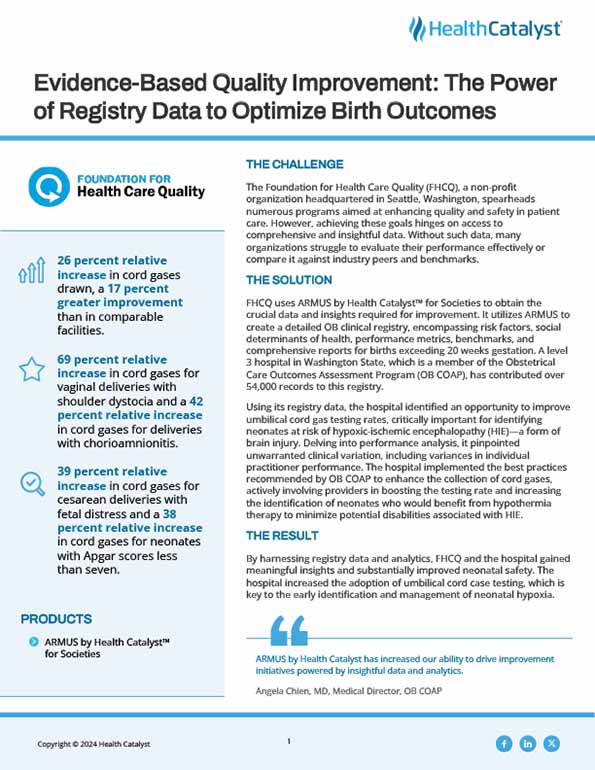The Foundation for Health Care Quality (FHCQ) enhances patient care quality and safety through numerous programs reliant on comprehensive registry data. This data is used to create detailed clinical registries, providing insights into risk factors, performance metrics, and benchmarks. One hospital FHCQ works with used these insights to identify and address clinical variations, implementing best practices to improve neonatal care.
The Foundation for Health Care Quality (FHCQ), a non-profit organization headquartered in Seattle, Washington, spearheads numerous programs aimed at enhancing quality and safety in patient care. However, achieving these goals hinges on access to comprehensive and insightful data. Without such data, many organizations struggle to evaluate their performance effectively or compare it against industry peers and benchmarks.
FHCQ uses ARMUS by Health Catalyst™ for Societies to obtain the crucial data and insights required for improvement. It utilizes ARMUS to create a detailed OB clinical registry, encompassing risk factors, social determinants of health, performance metrics, benchmarks, and comprehensive reports for births exceeding 20 weeks gestation. A level 3 hospital in Washington State, which is a member of the Obstetrical Care Outcomes Assessment Program (OB COAP), has contributed over 54,000 records to this registry.
Using its registry data, the hospital identified an opportunity to improve umbilical cord gas testing rates, critically important for identifying neonates at risk of hypoxic-ischemic encephalopathy (HIE)—a form of brain injury. Delving into performance analysis, it pinpointed unwarranted clinical variation, including variances in individual practitioner performance. The hospital implemented the best practices recommended by OB COAP to enhance the collection of cord gases, actively involving providers in boosting the testing rate and increasing the identification of neonates who would benefit from hypothermia therapy to minimize potential disabilities associated with HIE.
By harnessing registry data and analytics, FHCQ and the hospital gained meaningful insights and substantially improved neonatal safety. The hospital increased the adoption of umbilical cord case testing, which is key to the early identification and management of neonatal hypoxia.
"ARMUS by Health Catalyst has increased our ability to drive improvement initiatives powered by insightful data and analytics."
- Angela Chien, MD, Medical Director, OB COAP




